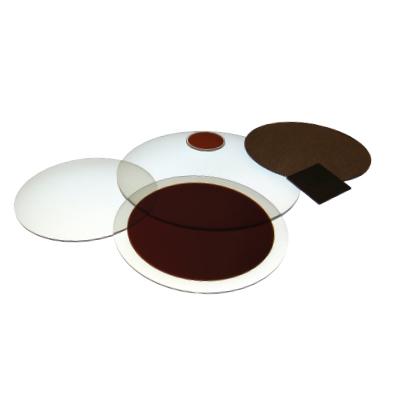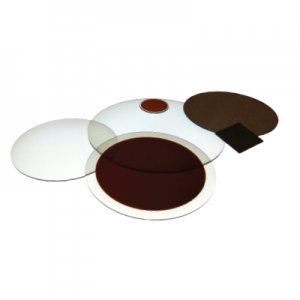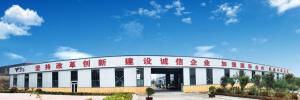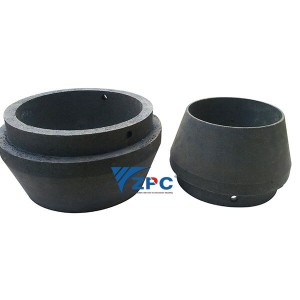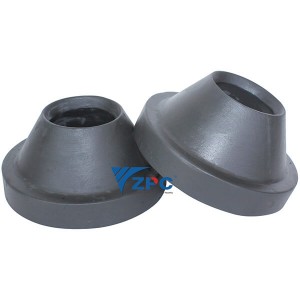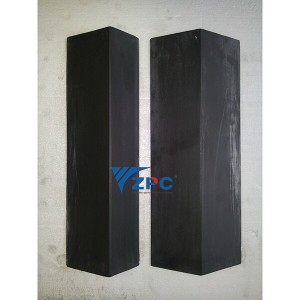SiC substrate mo le CVD faʻapipiʻi ata
Fa'afitia o Ausa Vailaau Matautia
Ole fa'a'afu ole vaila'au (CVD) oxide ose fa'asologa o le fa'atupuina fa'asolosolo lea e tu'u ai e se kasa muamua se ata manifinifi i luga o se mea fa'asusu i totonu o se masini. O le faagasologa o le tuputupu ae e maualalo le vevela ma e sili atu le maualuga o le tuputupu ae pe a faatusatusa ivevela vevela. E maua mai ai fo'i le silicon dioxide layers e sili atu ona manifinifi ona o le ata ua tu'u, nai lo le tupu. O lenei faagasologa e maua ai se ata tifaga ma le maualuga o le eletise, lea e sili ona lelei mo le faʻaogaina i ICs ma MEMS masini, faʻatasi ai ma le tele o isi talosaga.
E fa'atino le fa'afu o le ausa (CVD) oxide pe'ā mana'omia se vaega i fafo ae atonu e le mafai ona fa'ama'iina le su'ega silikoni.
Fa'atupula'ia o le Ausa Fa'ama'i:
O le tuputupu aʻe o le CVD e tupu pe a tuʻuina atu se kesi poʻo se ausa (precursor) i totonu o se faʻamaʻi vevela e faʻapipiʻi faʻapipiʻi i luga pe faʻalava. O le kesi e alu i totonu o le masini ma tufatufa tutusa i luga o luga o le papa. A'o aga'i atu nei mea muamua i totonu o le reactor, o le a amata ona mitiia e le wafer i luga o latou luga.
O le taimi lava e tufatufa tutusa ai mea muamua i totonu o le faiga, e amata gaioiga fa'a-kemikolo i luga o le mea'ai. O nei gaioiga fa'a-kemikolo e amata o ni motu, ma a'o fa'aauau pea le fa'agasologa, e tupu a'e motu ma tu'ufa'atasia e fatu ai le ata e mana'omia. O gaioiga fa'ama'i e fa'atupuina ai mea e lua i luga o le fa'a'ofu'ofu, lea e sosolo i luga o le fa'alava tuaoi ma tafe atu i fafo o le reactor, ae tu'u ai na'o le fafie ma lo latou ufiufi ata tifaga.
Ata 1
Fa'amanuiaga ole Ausa ole vaila'au fa'ama'i:
- Fa'agasologa o le tuputupu a'e o le vevela maualalo.
- Fa'ato'a vave fua (aemaise APCVD).
- E le tatau ona avea ma mea'ai silikoni.
- La'asaga lelei fa'asalalau (aemaise PECVD).
Ata 2
 Silicon dioxide deposition vs. tuputupu aʻe
Silicon dioxide deposition vs. tuputupu aʻe
Mo nisi fa'amatalaga e uiga i le tu'uina o ausa vaila'au po'o le talosagaina o se fa'amatalaga, fa'amolemoleFESOASOANI SVMi le asō e talanoa ma se tasi o le matou au faʻatau.
Ituaiga CVD
LPCVD
O le fa'apipi'iina o ausa vaila'au maualalo o se fa'agasologa o le tu'uina atu o ausa vaila'au e aunoa ma le fa'amalosi. O le eseesega tele i le va o le LPCVD ma isi auala CVD o le fa'aputuina o le vevela. LPCVD fa'aaogaina le maualuga o le vevela e teu ai ata, e masani lava i luga ole 600°C.
O le siʻosiʻomaga maualalo maualalo e fatuina ai se ata tifaga tutusa ma le mama maualuga, toe faʻaleleia, ma le tutusa. E faia lenei mea i le va o le 10 - 1,000 Pa, ae o le mamafa o le potu masani o le 101,325 Pa. O le vevela e fuafua ai le mafiafia ma le mama o nei ata, ma le maualuga o le vevela e mafua ai le mafiafia ma sili atu le mama.
- Ata masani na teuina:polysilicon, fa'a'ofuofu fa'asao & fa'asalaina,nitride.
PECVD
O le tu'uina atu o ausa vaila'au fa'alelei i totonu ole plasma ose faiga e maualalo le vevela, maualuga o le fa'aputuina o ata tifaga. O le PECVD e faia i totonu o le CVD reactor faʻatasi ai ma le faʻaopoopoga o le plasma, o se vaega o le kasa ionized ma se maualuga maualuga eletise eletise (~ 50%). Ole auala maualalo ole vevela lea e faia ile va ole 100°C – 400°C. O le PECVD e mafai ona faia i le maualalo o le vevela ona o le malosi mai le eletise saoloto e vavaeeseina ai kasa faʻafefe e fausia ai se ata i luga o le fafie.
O lenei auala e faʻaogaina e faʻaaogaina ai ituaiga eseese e lua o le plasma:
- Ma'alili (e le'o le vevela): e maualuga atu le vevela o eletise nai lo vaega e le tutusa ma ions. O lenei metotia e faʻaaogaina ai le malosi o electrons e ala i le suia o le mamafa i totonu o le potu faʻapipiʻi.
- Thermal: electrons e tutusa le vevela e pei o vaega ma ions i totonu o le potu tuu.
I totonu o le potu faʻapipiʻi, e lafoina le eletise alaleo i le va o eletise i luga ma lalo ifo o le wafer. O lenei mea e molia ai le eletise ma tausia i latou i se tulaga fiafia ina ia mafai ai ona teu le ata manaʻomia.
E fa laasaga i le fa'atupuina o ata e ala i le PECVD:
- Fa'apipi'i masi fa'atatau i luga o se eletise i totonu o le potu fa'aputu.
- Fa'ailoa kasa fa'agaoioi ma fa'aputu elemene ile potu.
- Auina atu le plasma i le va o eletise ma faʻaoga le voltage e faʻaosofia ai le plasma.
- E ta'ape le kasa fa'agaoioi ma fa'agaioi ma le fa'aele'ele mafolafola e fau ai se ata manifinifi, e sosolo i fafo o le potu.
- Ata masani e teuina: silicon oxides, silicon nitride, amorphous silicon,silikon oxynitrides (SixOyNz).
APCVD
O le tu'uina atu o ausa kemikolo mamafa ole ea ose faiga fa'apa'u maualalo ole vevela lea e faia i totonu ole ogaumu ile mamafa masani ole ea. E pei o isi auala CVD, e manaʻomia e le APCVD se kasa muamua i totonu o le potu faʻapipiʻi, ona faʻasolosolo malie lea o le vevela e faʻafefe ai gaioiga i luga o le wafer surface ma teu ai se ata manifinifi. Ona o le faigofie o lenei metotia, o loʻo i ai se maualuga maualuga o le tuʻuina atu.
- O ata masani e teuina: fa'amea fa'ama'i ma fa'agata fa'ama'i, silicon nitrides. Faʻaaogaina foi i totonufa'atosina.
HDP CVD
Ole tu'uina atu ole ausa vaila'au ole plasma maualuga ole PECVD o lo'o fa'aogaina ai le plasma maualuga maualuga, lea e mafai ai ona fa'agaoioi le wafers ma se vevela maualalo (i le va o le 80°C-150°C) i totonu o le potu tu'u. E fa'atupuina ai fo'i se ata tifaga e fa'atumu ai ala tetele.
- Ata masani e teuina: silicon dioxide (SiO2), silicon nitride (Si3N4),carbide silikoni (SiC).
SACVD
O le fa'aputuina o ausa vaila'au e ese mai isi metotia aua e faia i lalo ifo o le mamafa o le potu ma fa'aogaina le osone (O.3) e fesoasoani i le faʻatupuina o le gaioiga. O le faʻagasologa o le faʻapipiʻiina e faia i se maualuga maualuga atu nai lo le LPCVD ae maualalo ifo nai lo le APCVD, i le va o le 13,300 Pa ma le 80,000 Pa. O ata o le SACVD e maualuga le faʻapipiʻiina ma e faʻaleleia pe a faʻateleina le vevela seia oʻo i le 490 ° C, i le taimi lea e amata ai ona faʻaitiitia.
Shandong Zhongpeng Special Ceramics Co., Ltd o se tasi o silicon carbide ceramic fofo fou meafaitino i Saina. SiC fa'atekinisi sima: O le maaa o Moh e 9 (New Moh's ma'a'a e 13), fa'atasi ai ma le lelei tele o le tete'e atu i le tafia ma le a'a, sili ona lelei abrasion - tete'e ma le fa'ama'i fa'ama'i. O le ola tautua a le SiC e 4 i le 5 taimi umi atu nai lo le 92% mea alumina. O le MOR o le RBSiC e 5 i le 7 taimi o le SNBSC, e mafai ona faʻaogaina mo foliga sili atu ona faigata. O le faiga o upusii e vave, o le tuʻuina atu e pei ona folafolaina ma o le tulaga lelei e le lua. Matou te faʻaauau pea i le luʻiina o matou sini ma toe tuʻuina atu o matou loto i le sosaiete.
